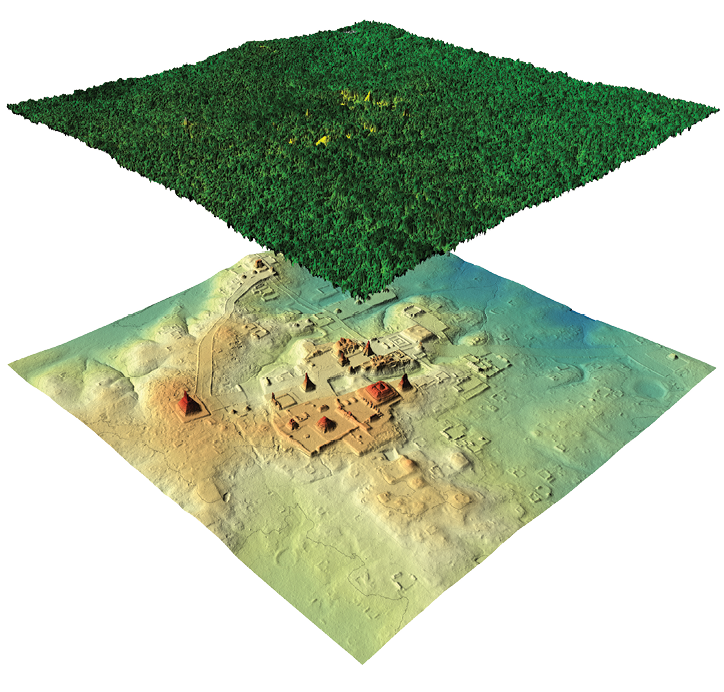3D Scans Help Preserve Ukraine’s Cultural Heritage
As the war in Ukraine enters its fifth month, the toll of the conflict continues to rise. Russia’s invasion has tragically caused the deaths of tens of thousands of civilians and military personnel alike.
The fighting also impacts the global economy in significant ways. From fuel to food, prices have increased since the conflict began, with little hope for an end in sight. Without a doubt, the rippling waves of the invasion affect every corner of the world.
Yet, the destructive forces of war reach even beyond the human and economic toll.
Have you ever thought about what’s at risk culturally? After all, destroying a country’s cultural heritage remains one of the quickest ways to erase their national identity.
By their very nature, wars unleash destructive forces that devastate the landscape. Thriving urban areas can turn to rubble, while the natural world can go from lush to lifeless. During my tours in Iraq and Afghanistan, I saw the toll such conflict can take on a culture first-hand.
Sites of irreplaceable cultural value can be destroyed in an instant.
Ukraine holds dear many such cultural treasures, including seven UNESCO World Heritage Sites.
With every passing day, these sites and others remain at risk of being lost forever. Thankfully, technology is stepping in to help preserve the past, even with an uncertain future.
With a new initiative, dubbed Backup Ukraine, LiDAR & 3D scans are being utilized to save Ukraine’s cultural heritage.
Let’s take a look at the technology, its uses, and how Ukrainians are preserving their national treasures.
Drones & 3D Scans in Archeology
First, it’s important to know that archaeologists have used drones and 3D modeling for many years.
Maybe you’ve even seen the fantastic renderings of lost cities in the jungle, made possible by UAVs and scanning technology.
Thanks to their ability to approach objects and structures from multiple angles, drones capture data the naked eye and crewed aircraft miss. In many cases, the same holds true for handheld 3D scanners, which allow the recorder to move around an object and capture every detail possible.
When processed through software like Pix4D, the data produces high-quality digital copies of physical objects.
Ok, so 3D scanning technology is impressive, but how is it helping culturally?
Well, take for instance, the example of a damaged historical structure in Central Mexico.
A 2,500 year-old Olmec altar in Chalcatzingo, Mexico, suffered damage caused by a fire. Ironically, the same structure built to protect the altar from the elements actually caught on fire.
Fortunately, a previously-recorded 3D scan was available, allowing archaeologists to reconstruct and repair the altar. Without such a scan, such repairs would have been nearly impossible.
3D scanning and modeling are now essential tools for archeologists looking to preserve the past. However, these tools help preserve the modern world as well.
Let’s take a look at how Ukraine’s cultural heritage is being preserved through 3D scans and digital models.
Applying Technology to Ukraine's Cultural Heritage
With 3D scans and aerial 3D modeling already proven technologies, they’re well suited to help preserve Ukraine’s cultural heritage.
One company, in particular, is leading the way.
Polycam, founded in 2021, quickly became a major name in 3D scanning. Using the LiDAR sensors in some modern smartphones and other devices, the company’s software, with cloud mesh editing, can process images into 3D models.
Available for both for Apple and Android, the newest version of the app fuses LiDAR and photo data for an even higher quality 3D model.
As the war in Ukraine broke out, Polycam realized the potential of their technology to help preserve Ukraine’s cultural heritage. Thus, Polycam began the Backup Ukraine project, in partnership with the United Nations Educational, Scientific and Cultural Organization (UNESCO), Vice Media Group, Danish non-profit Blue Shield Danmark, Ukraine’s Heritage Emergency Rescue Initiative, and the National Museum of the History of Ukraine.
Polycam and its partners encourage Ukrainians to become an army of archivists using the company’s app. Everything from buildings to monuments and even everyday objects are fair game. Polycam will process and store these scans for at least a five year period.
The goal is to help people safely preserve their past where “no bombs can reach.” Through these digital twins, the information of cherished structures will remain available and accessible. In the event of damage, exact restorations will be possible. In the case of destruction, recreations can be successfully made.
Already, Ukrainians have uploaded scans of statues, works of art, their homes, and even destroyed military vehicles. It’s definitely worth taking a few minutes to scan through the models.
Now, if war destroys any of these objects, there will at least be a digital record of them for the world to enjoy, even if the physical structure is gone.
The Takeaways
3D modeling has proven itself to be a versatile technology. Industries everywhere already embrace this innovation for mapping and building digital twins.
The benefits gained from 3D digital asset modeling (DAM) can now include the preservation of Ukraine’s cultural heritage.
Thanks to the efforts of Polycam and its partners, we can all enjoy these artifacts for generations to come.
—
At Consortiq, we help you find a better way to acquire and manage the data you need – from consultation and program implementation to actually doing the work for you.
Ready to learn more? Just complete the form below to schedule a risk-free consultation!

David Daly - Contributing Author
David Daly, is an award-winning photographer/writer and licensed (FAA) Commercial sUAS pilot. A graduate of the United States Naval Academy, David is a former Marine Corps officer with a BS in Oceanography and has earned his MBA from the University of Redlands. David has worked for Fortune 100 companies and has a background in aerospace, construction, military/defense, real estate, and technology.



